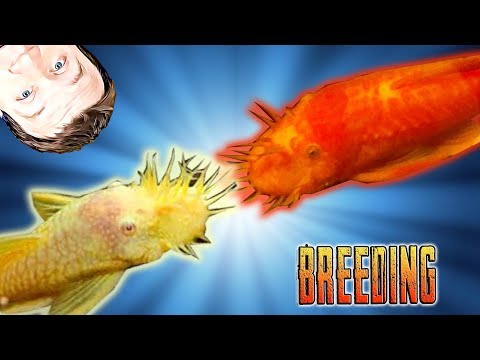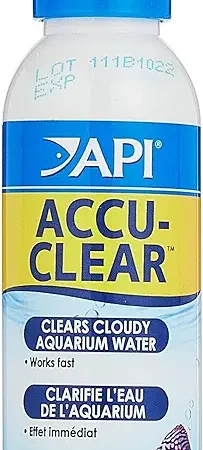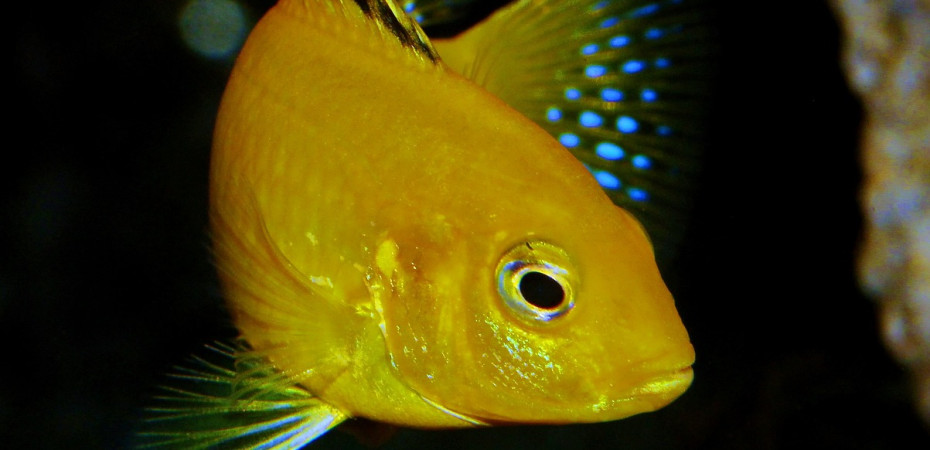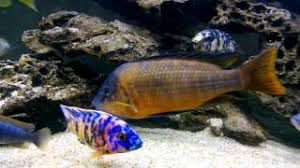How to Breed Bristlenose Plecos
7 years ago admin 0
Breeding Bristlenose
Bristlenose Breeding
Breeding bristlenose. So today we are going to talk about breeding bristlenose. Now I know I’ve been doing multiple videos on breeding so you are thinking what makes you the sex expert. Well I have no idea. I just know a little bit and I’m just gonna try to share with you so let’s go ahead.
I thought this time we would actually film this down in the fish room not in the film room. We would film this down in the fish room that way I can show you guys firsthand males, females, aquariums, so on and so forth and give you guys something better to look at than my ugly face. Alright so let’s go ahead and let’s move it over to the aquariums.
Breeding Aquarium Requirements
Okay so first of all let’s talk about proper aquarium size. I’ve got the breeding bristlenose in multiple different types of tanks as you can see. Right here these are both 40 gallon tanks. I’ve got different types breeding in each one. I keep them separate so I have albinos in one, I have calicos in another, so on and so forth. So these are twenty longs, these tend to work pretty well. I probably wouldn’t do more than maybe three fish to a tank and these. I definitely wouldn’t use, ten gallons. That’s just way too small for two of them. You may have trouble getting them to breed in there just because they are not very comfortable.
What you’ll learn with breeding bristlenose plecostomus is that they typically breed during the winter time. So they’re looking for cooler temperatures. A lot of times you can initiate breeding behavior by lowering the temperature of your tank. So you might actually do a water change and put a little bit of colder water in there. I’m not talking about you know shocking them with eight degree temperature change and killing them. I’m talking just a couple of water degree temperature change. That will a lot of times get them where they are ready to spawn.
Spawning Caves
The next thing is where do they spawn? The most common place they tend to spawn in are different types of caves and if there’s not caves available they’ll spawn on driftwood sometimes. But they typically try to find a secluded spot so that the father can guard them. He may try to go in between a piece of driftwood and a piece of rock. Howecver, caves are pretty much the easiest so the best thing to do is to set something out for them.
So some of the different ones that are available are right here. This is a specifically a plecostomus cave.This is one where someone has actually made it out of clay. This one over here is just one that’s made out of a terracotta pot with just an entrance cut out on it. This one back here is standing up. Yeah I know you’re going standing up – what good is that. Well I threw it in there and that’s how it landed.
Bamboo Caves
This is a piece of bamboo. Let me warn you out of experience about using bamboo caves. So when you take a piece of bamboo it has sections on it. So you can cut it right at that section and it’s closed off at that end. But as that bamboo begins to rot that hole will begin to break apart. Then one time I was pulling a plecostomus out of one of those and that hole had gotten big enough that he tried to jam his way through it and he got stuck in that hole. Luckily I was able to break it apart and get him to fall right out.
So just a warning. I’m not a big fan of using those anymore. Another one is some more terracotta pots where they’ve taken two of the bottom parts and put it together and put a hole in it. These are the terracotta watering spikes. These guys you can get on Amazon, you get like six or eight of them at a time. These tend to work pretty good.
Make a Bunch of Caves
Also some people will take slate and make a bunch of caves at one time out of multiple pieces of slate. That way if you’ve got multiple breeding pairs that’s probably one of the most common setups you’ll see. For people that are seriously breeding all types of plecostomus. but again it needs to be a single entrance because the dad becomes very territorial and he wants to guard those fry and those eggs at all time. So he wants to find a place where he can get the female in and get her to lay the eggs and then he can guard them. It only has one entrance to guard.
Breeding Bristlenose Age
So, age. Typically they’re gonna need to be about a year to a year-and-a-half old, probably about three inches long. The people that have the problems with breeding bristlenose are usually because the ones that they’re trying to breed they’re just not old enough. They’re just not actually ready to spawn yet. First of all you want to be able to tell the difference between a male and a female. If you look right here you’ll see I’ve got a an albino male and you’ll notice all the bristles that are coming out of the top of his nose.
The females will have bristles sometimes too but they typically just kind of come out of the sides. They don’t come out of the top. Sometimes that’s kind of a good way to determine the age of the bristlenose also is when they start to get lots of those bristles coming out. That tends to kind of date them as you know a year and a half or so old and then over here we have the female and you’ll see the female she’s got a few bristles but again they’re just kind of coming out ot the sides.
Breeding Bristlenose Behaviour
In fact if you have a male that is sitting on eggs sometimes you’ll have multiple females that’ll lay in that cave, so that male is guarding multiple sets of eggs. and so what typically happens is you have the the male who begins to search for a specific cave that he wants to spawn in and he will begin to go around and kind of search out and he’ll be kind of kind of clean around that cave and then when he’s finally ready he will pull in a female. He’ll begin to lure her into the cave.
Breeding Bristlenose Sites
When she’s satisfied she’ll get in there and when she’s satisfied, no I don’t mean it like the head. When she’s satisfied with the area she’ll then lay the eggs. Then the male will soon push her out and then he will fertilize the eggs and the female’s job after that is completely done. So she will swim away with nothing else to do with the eggs or the fry at all.
These are the eggs of the calicoes. This is a, no it’s kind of difficult to see, this was actually shot at night. It’s hard to get a shot of these things because they’re so deep in the cave. As you can see these eggs are about a day old in this picture and so typically these eggs will hatch out in approximately around 3 to 5 days. Then what the fry will do the fry will attach themselves to the inside of the cave.
Caring for the Fry
Here is a picture of the same calicoes. These babies are three or four days old and yet as you’ll see they’ve got themselves attached to the cave. Now they will sit there and they will stay attached until they have completely absorbed the egg yolk. And the entire time the male will sit there and he will fan the eggs and then fan the the fry. If you look at this male right here there’s no eggs in there right now but see the way that he’s flapping his fins that’s what he sits there and does 24 hours a day to the eggs and to the babies. That’s to keep the eggs from fungus and then just to provide a water stream that keeps the babies clean.
So he’ll stay there and he will take care of the babies for a long time. Typically the babies are gonna stay in there for another 2 or 3 days until that egg sac finally gets completely consumed and then they will come out looking for some kind of food.
Feeding the Fry
They’re going to immediately get on the glass as you’ll see. Some of these babies right here these are about a week, a week and a half old and these you see they’re just sitting there going around the glass and they’re finding any kind of algae that they can. But there’s also a food that you can supplement for them. My favorite thing to use is French style green beans. Since French style are already cut open it’s very easy for the babies to get on them and begin to eat them and not have to try to make it through the skin.
Now you see that there’s fry that are in this tank but that’s not typically the way that I like to do it. So you don’t ever know what type of male you’re gonna get. Whether he’s gonna be protective or not. Sometimes he’ll take care of the eggs and then once they hatched he’ll just leave and so if that’s the case I will then immediately move the cave with the eggs in it and then I will move them to a another tank and so right now I’ve got this one over here. This one’s got a lot of tannins in it right now and so in fact this calico right here he is guarding fry there.
Older Fry
This is the fry that you see swimming around in here. These are from an earlier spawn. These guys are going to be about two and a half to three weeks older than the fry that are actually in this cave. That you are not gonna be able to see because it’s just too dark in there. But what I did after they laid the eggs, this father takes really good care of them, so what I went ahead and did is I removed the cave and then I moved it from the forty gallon where they were initially laid at and I moved it into this ten gallon.
That way it’s a whole lot easier to keep up with them and it’s a lot easier to feed them. Typically they will come out at night now and they’ll feed and then they’ll go back into the cave. They’ll do this for about a week or two and the father will continue to watch over them and try to keep them safe and then typically after from about the time they’re born to about three weeks to a month the babies will finally all leave the cave and not come back to it anymore. So it’s a whole lot easier just to take the cave with either the father, if he’s doing a good job you can take him with it, if you don’t want to you can remove him.
Other Things to Feed the Babies
It’s not a big deal, it’s not going to affect him or affect the young, but I just kind of like to move the father with it and move them to a different tank again, probably something smaller five gallon or so ten gallons so that you can take care of them.
Some other things that you can feed the babies. You can just take flakes and crush them up. You can take peas and smash them up. Take some zucchini and blanch it. Again you’re trying to soften it up so that the babies can get through into another really good thing to feed them is Repashy there’s multiple types of Repachy and they’ll pretty much eat just about just about any of it.
Selling Your Fish
So now let’s talk about the ability to make money off of these. So to be able to sell them that you really need to grow them out for about six months. You need to get them to they’re about an inch and a half long, so that they’re healthy enough to be able to sell. Now let’s talk about some different avenues of where to sell. Your first thought may be fish store. Well really fish stores should probably be the very last thing on your list because that’s gonna be the least amount of profit. The first thing you want to start off with is friends and people that you know that have fish tanks.
List on Craigslist
The second thing you want to probably try out is Craigslist. Put a listing up on Craigslist and try to sell them to someone local. That way you don’t have to ship. The next thing that you can look at doing is putting them on some of the different web sites like aquabid or getgills com. Just remember when you do it this way now you’ve got to ship so you’ve got to worry about boxes and how you put your boxes together with the foam on the inside. If it’s too hot you got to have a cooling pack. If it’s too cold then you have to have a heat packs.
Other Places to Sell
The next place that you should look to sell them at is your local club. Look up, try to find your local clubs. Now you may find your club that seems to be an only cichlid club but contact them because typically at their swap meets and at their auctions you can bring just about any kind of fish there. So that’s a great place to also put them, depending on how many people show up. If you go to an auction and there’s not a big turnout you’re not gonna get very much. So that’s the risk that you run listing them in an auction.
Alright so I hope I covered everything that I can possibly imagine about breeding plecostomus. If you guys have a question be sure and leave it below. If you guys have some of the things that you do to get yours to breed or taking care of the fry be sure and leave that down below. I’d love to be able to hear from you guys so that we can share the knowledge that everyone has.





